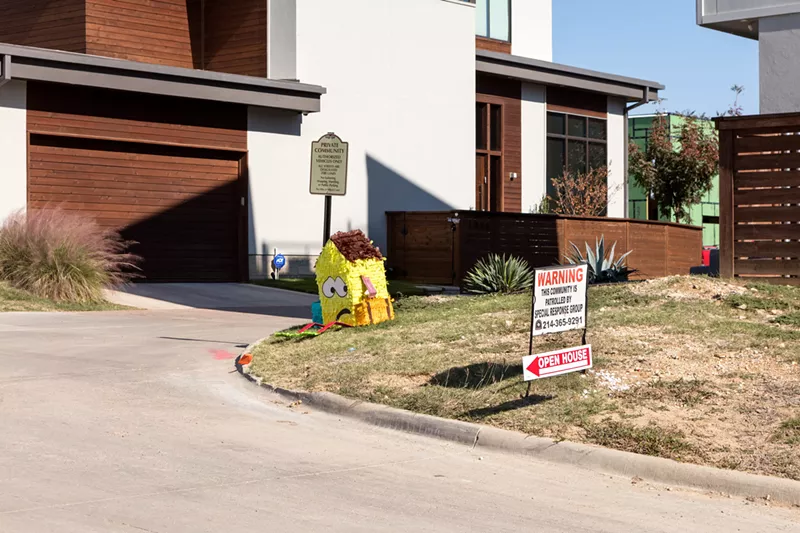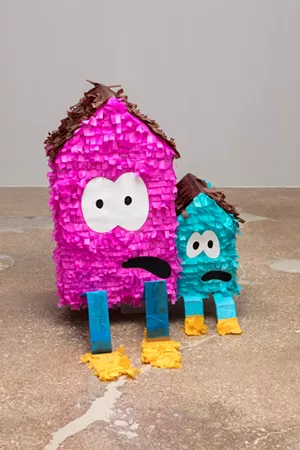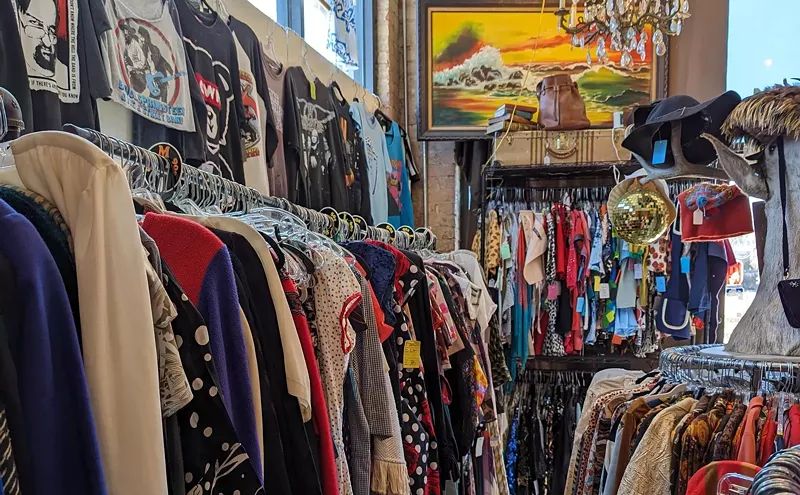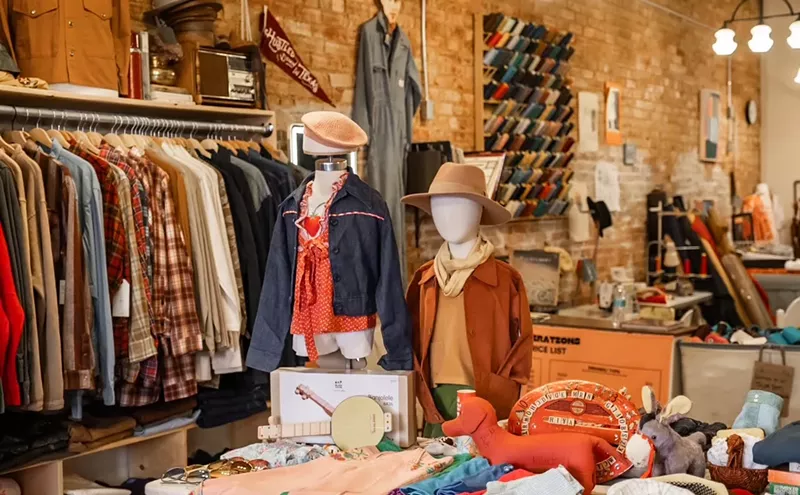Dallas-based artist Giovanni Valderas is doing something about it. His new project, a guerilla-style street installation called Casitas Tristés, is meant to draw attention to the people who are getting swept away by the winds of change.
Valderas' tiny, forlorn-faced piñata houses sit on street corners, low-slung walls and lots around his native Oak Cliff, their tissue-paper shingles ruffling in the wind. He has watched many people move away from the neighborhood and believes it is being sapped of the culture that made it a desirable place to live."After a time, these things [the piñatas] will disappear or disintegrate, and I think for me, it becomes a really big metaphor for the community. The community that is here now, but probably in a few years will be pushed out." – Giovanni Valderas
tweet this
“I don’t think it’s an issue of people not caring. It’s an issue of people not being informed," Valderas tells the Observer. "So what better way to use visual language to do that? You know, something that interrupts daily life."
Dallas has more apartments under construction than any city in the nation, according to realpage.com. The average rent per square foot in Dallas has also been increasing for years — although at a slightly slower rate in the last year — and many of the new apartments will be luxury units in gentrifying areas.
Valderas takes issue with developers who are receiving subsidies for luxury housing that longtime residents of the neighborhood can’t afford. He's not against growth, he says, but he wishes it could be organic, benefiting the members of the community rather than displacing them with rising land values and replacing them with richer residents.
When Valderas was growing up in Oak Cliff in the '80s, it was mostly Latino. He remembers having to move around a lot with his family because his father’s absence meant his mother had to make ends meet on her own. He says many of his family members who still live in Oak Cliff are struggling to stay in their homes and are being pushed farther and farther south to Red Oak and Waxahachie.
“When I was young, I didn’t realize why we moved so much, and it wasn’t until I got older that I realized, ‘Oh, that’s why. Because Mom couldn’t pay the rent,’" Valderas says. “It would have been great for someone like my mother to have a helping hand.”
The mission of Casitas Tristés is to communicate with the residents of Oak Cliff in a visual vernacular they identify with. He wants to show them they have a voice and that they are not forgotten while also challenging existing power structures with subversive imagery. The piñatas’ bright colors and joyful connotations clash meaningfully with their sad expressions and dilapidated surroundings.
Valderas says his sculptures remind him of the roadside memorials left by loved ones at the sites of car crashes or fatal accidents in that they, too, chronicle the passing of something dear.
“After a time, these things will disappear or disintegrate, and I think for me, it becomes a really big metaphor for the community," he says. "The community that is here now, but probably in a few years will be pushed out."
To help push back against the displacement of people in gentrifying neighborhoods, the sculptures are presented alongside postcards addressed to City Hall. The postcards have prompts and space for people to add their thoughts.
“It’s one thing to put these things out, but it’s also another thing to [include the prompts] because people, I think in this climate, this Trump era that we’re living in, you know, people want to do something about things," Valderas says. "They just need an avenue."













